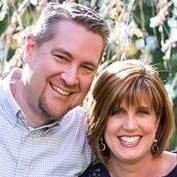10 Steps: Steps 3-4
Now that you’ve begun to define your church’s goal and pathway, it’s time to decide how to implement discipleship growth into the life of your church. That takes us to

Growth is limited when discipleship only happens on Sundays. Ideally, the sermon plants a seed that continues growing throughout the week, so give your congregation simple ways to water that seed throughout the week.
Here are a few examples of what some church leaders have done:
- Provide a simple application of the message in printed form or by email
- Teach a mid-week class that delves further into the sermon’s text
- Give bookmarks with daily Scripture readings that follow the sermon series
- Create a daily devotional to accompany the series. It would likely include a text of Scripture, a brief reflection on the text, and response questions with a space to journal.
- Encourage other ministries and small groups to find ways of interacting with the sermon series. The idea is not to take away from the focus of any ministries but to synthesize what people are learning and doing in those ministries with the Sunday message.
To summarize, ask yourself: What simple step can I take to help extend the sermons into the congregants’ daily lives?

Before implementing the concept of the faith stages everywhere else in your church, reflect on your own journey through them. Pray for discernment to know where in the stages you are right now, and remember that no stage is better than another. What matters is your movement and growth, not your location at a particular moment.
Create opportunities for people to write their own stories through the faith stages. Churches have found this happens most successfully when the head pastor and other leaders share their own faith stories with the congregation. This gives people the courage to reflect on their personal journeys and begin sharing them with each other. Ascending Leaders even offers an on-demand workshop on how to write your faith stories through the stages. For a better idea of this workshop, check out this podcast episode in which one pastor describes his church’s experience with it*. You can also learn more and request information










